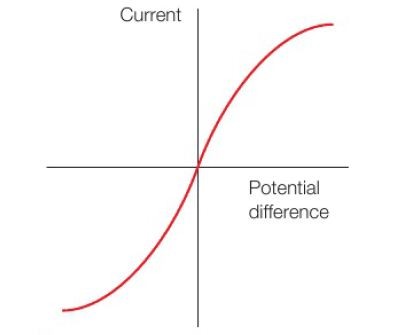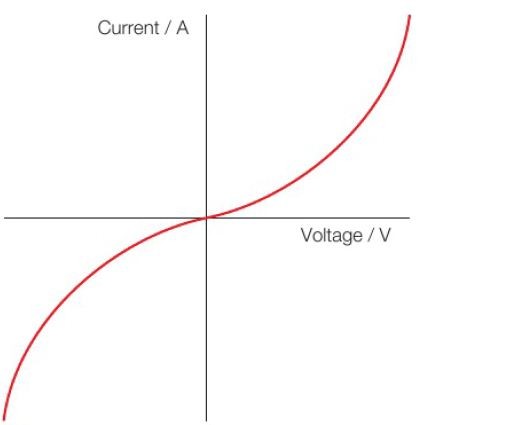How to identify I-V graph of a Thermistor & I-V graph of a filament bulb?
Last updated on April 14th, 2021 at 04:39 pm
I-V graph of a Thermistor and I-V graph of a filament bulb are not identical. Now the question is: How to identify the I-V graph of a Thermistor and the I-V graph of a filament bulb? Here we will discuss how to do that.
Both Thermistor and filament bulb are non-ohmic in nature. So this post is also coverage on the V-I characteristics of non-ohmic conductors.
In a nutshell, thermistors and filament bulbs behave differently when the temperature is high and that makes all the difference in their I-V graph or I-V characteristics of these two non-ohmic conductors. [ Note: I-V graph is current-voltage characteristic] Now, let’s discuss in detail.
I-V graph for a filament bulb
In the I-V graph of filament lamp for a small voltage, the current is proportional to it. That is plotted by the straight-line portion of the graph through the origin.
At higher voltages, a larger current is driven through the lamp filament wire and the wire gets heated up due to the high current flow.

At higher temperature, metals have higher resistance.
Remember that, the gradient of the I-V curve is I/V which is the reciprocal of resistance (as you know, R = V/I). That means higher resistance means lower gradient of I-V curve. See how and when this happens here.
When voltage gets higher, current also increases. This takes the temperature to a higher range, and that makes the resistance higher. As resistance gets higher, the gradient of the I-V curve falls.
Hence we can observe that at higher voltage range the gradient of the curve becomes less.
I-V graph for Thermistor
For the thermistor, its resistance reduces with the temperature.
In case of Thermistor, at higher voltage range when current flow becomes higher the temperature of the conductor also rises, but in this case this reduces the resistance of the thermistor. Lower resistance means higher gradient of the I-V curve. [ Note that R = V/I . And the gradient of I-V curve is I/V. So resistance is reciprocal to gradient of I-v graph].
Hence we find at higher voltage range of thermistor I-V graph the gradient of curve rises.
And it’s just opposite to that what we have discussed in the previous section on filament bulb I-V curve.

Summary
We have selected 2 non-ohmic conductors and analyzed the I-V graph of them.
I-V curve of filament bulb is Non-ohmic with the lower gradient at a higher voltage range.
And, I-V curve of the Thermistor is Non-ohmic with a higher gradient at a higher voltage range.

